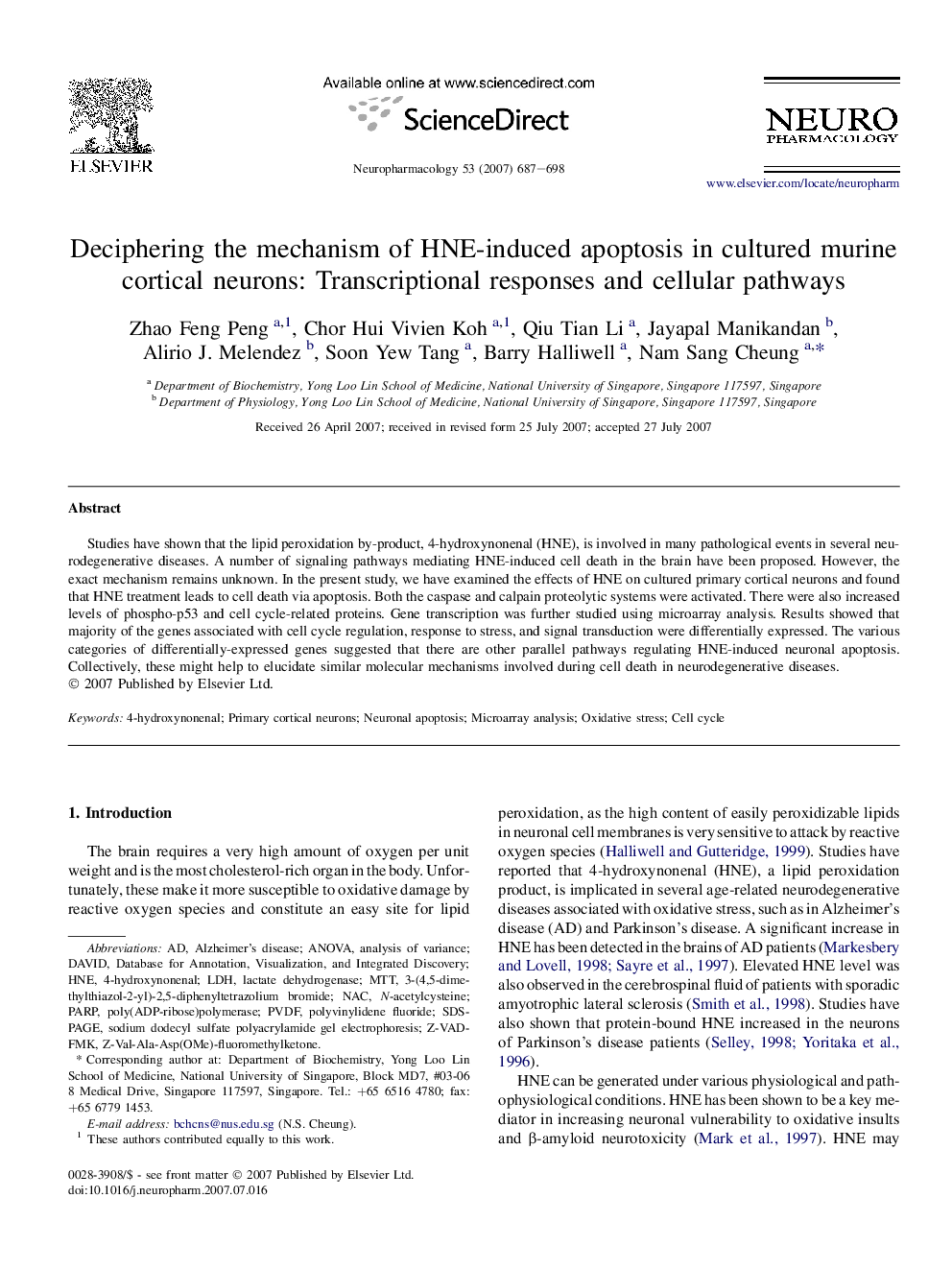| Article ID | Journal | Published Year | Pages | File Type |
|---|---|---|---|---|
| 2494679 | Neuropharmacology | 2007 | 12 Pages |
Studies have shown that the lipid peroxidation by-product, 4-hydroxynonenal (HNE), is involved in many pathological events in several neurodegenerative diseases. A number of signaling pathways mediating HNE-induced cell death in the brain have been proposed. However, the exact mechanism remains unknown. In the present study, we have examined the effects of HNE on cultured primary cortical neurons and found that HNE treatment leads to cell death via apoptosis. Both the caspase and calpain proteolytic systems were activated. There were also increased levels of phospho-p53 and cell cycle-related proteins. Gene transcription was further studied using microarray analysis. Results showed that majority of the genes associated with cell cycle regulation, response to stress, and signal transduction were differentially expressed. The various categories of differentially-expressed genes suggested that there are other parallel pathways regulating HNE-induced neuronal apoptosis. Collectively, these might help to elucidate similar molecular mechanisms involved during cell death in neurodegenerative diseases.
